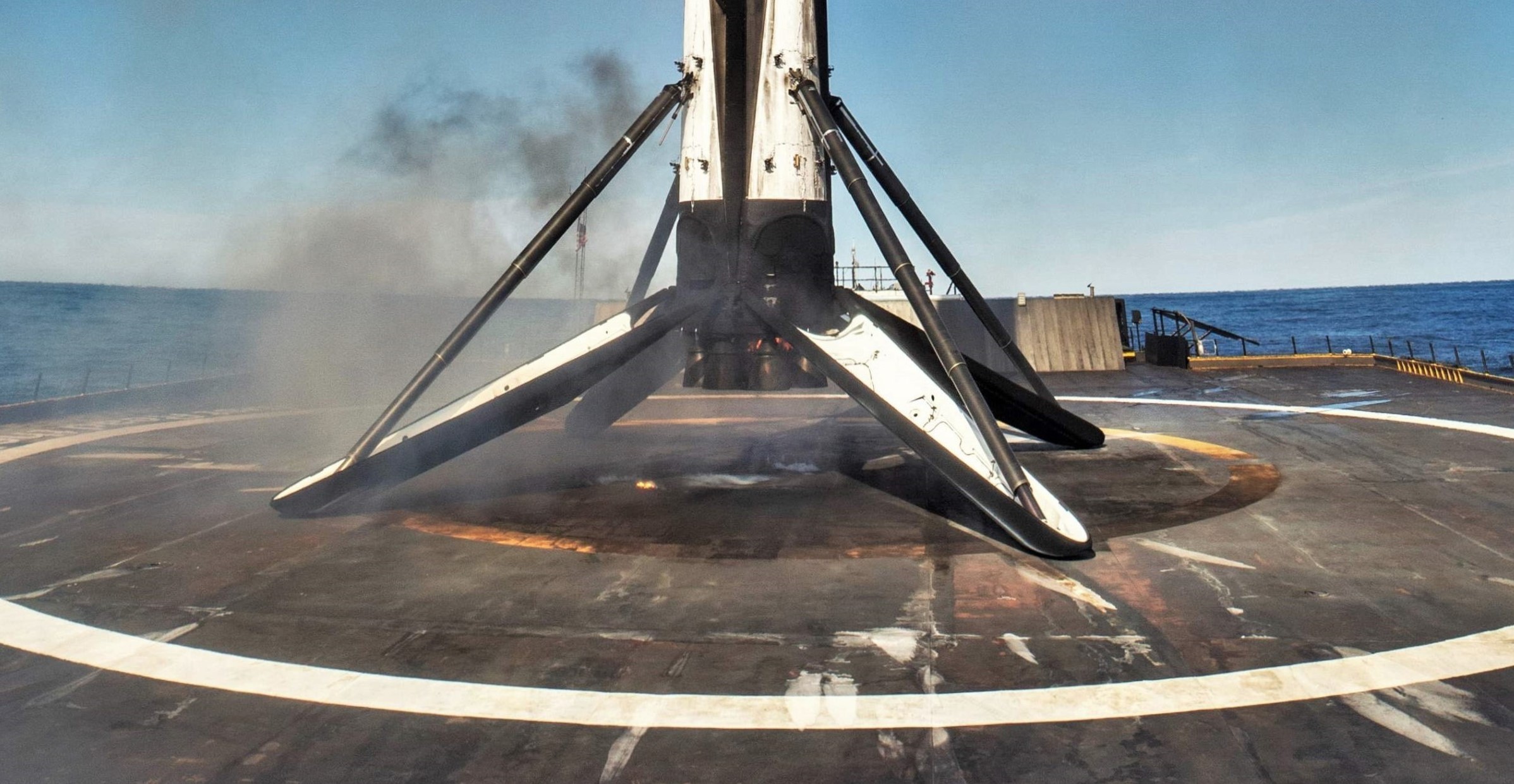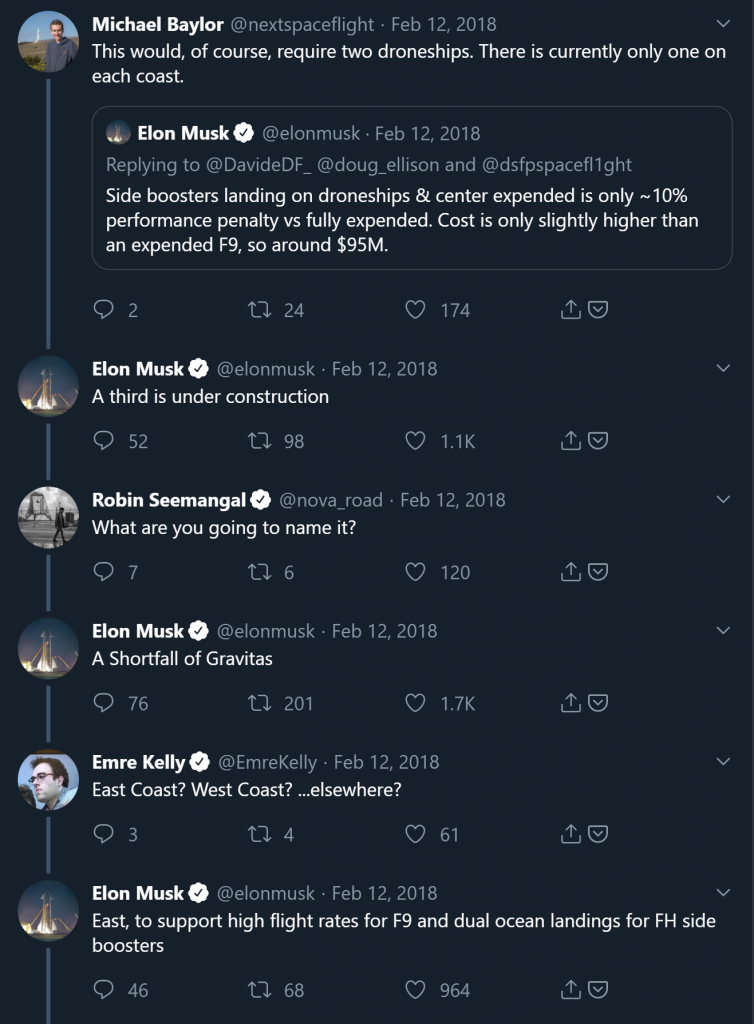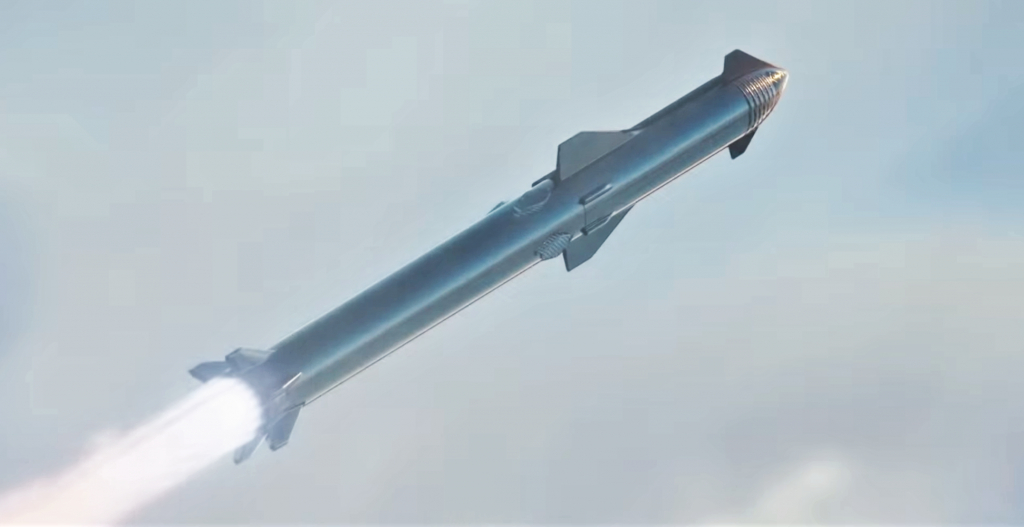

News
Elon Musk says SpaceX is still building a third drone ship – but is it for Falcon or Starship?
Unprovoked on October 9th, SpaceX CEO Elon Musk tweeted “A Shortfall of Gravitas” – the name of a third drone ship settled on a year and a half ago – and reaffirmed that plans were still afoot to build a third rocket recovery vessel.
This is the first update on SpaceX’s newest drone ship in more than a year and comes just a few months after drone ship Just Read The Instructions (JRTI) – formerly stationed in California – was sent East through the Panama Canal. News that A Shortfall of Gravitas (ASOG) is still in the works raises the questions: what’s the holdup and what role(s) will the new drone ship play in SpaceX’s rocket recovery fleet?
Back in July 2018 and just shy of half a year after ASOG’s development was revealed, CEO Elon Musk indicated that the drone ship could be completed and ready for recovery operations as early as “next summer”, or Q3 2019. Now two weeks into Q4 2019, this can be interpreted in several ways, with the most likely explanation being that SpaceX’s naval contractor of choice is running behind schedule while building the new drone ship.
That’s the simplest explanation and operates under the assumption that Musk’s February 2018 comments remain true, meaning that ASOG is first and foremost (if not entirely) meant to support dual side booster landings for future Falcon Heavy launches and an increased Falcon 9 flight rate. However, recent developments give reason to believe that this may no longer be the guiding motivation behind SpaceX’s construction of a new drone ship.

Most notably, over the last several months of 2019, it has become increasingly clear that SpaceX plans (or hopes) to shut down its West Coast Vandenberg Air Force Base (VAFB) launch facilities for anywhere from 9 to 18 months. In just the last few days, word broke that Cape Canaveral Air Force Station (CCAFS) believes that it will be able to open an East Coast polar launch corridor (essentially the same thing VAFB offers) just months from now, and SpaceX hopes to be its first user as soon as February 2020.
Possibly along those lines, SpaceX took the step of sending West Coast drone ship JRTI on a several-week journey across the Panama Canal. The drone ship has since stopped in Louisiana for what is assumed to be maintenance and it remains unclear if JRTI will head to Port of Brownsville (Texas) to support Starship test flights or to Port Canaveral to fill the role ASOG was initially meant to.
As such, it’s no longer clear if SpaceX actually has a need for ASOG, at least as it was described last year. If SpaceX is moving JRTI east for the indefinite future, OCISLY and JRTI could easily support the Falcon 9 launch rates needed for Starlink and dual Falcon Heavy side booster recoveries, although Falcon Heavy is not scheduled to fly again until late-2020.
This leaves one obvious option left to explain ASOG’s continued existence and delayed debut: SpaceX may have paused work for a variety of reasons and changed ASOG’s design to account for a new role in the recovery fleet. That new role would likely center around the extremely rapid progress SpaceX is making with Starship as it pursues a series of ambitious flight tests that could begin before the end of 2019.

Of note, an August 2019 Draft Environmental Assessment (EA) of East Coast Starship launches revealed that SpaceX’s initially plans to land all Super Heavy boosters on a drone ship stationed a few miles off the Florida coast. Starship may also require drone ship landings in the early stages, at least until SpaceX is able to complete the environmental review and licensing process needed before it can begin to land Starship/Super Heavy at Pad 39A and Landing Zones 1 and 2.
For now, we’ll have to wait and see where drone ship JRTI heads after its Louisiana interlude and hopefully find out soon whether ASOG is a drone ship copy or something else entirely.
Check out Teslarati’s Marketplace! We offer Tesla accessories, including for the Tesla Cybertruck and Tesla Model 3.

News
Waymo sues Santa Monica over order to halt overnight charging sessions
In its complaint, Waymo argued that its self-driving cars’ operations do not constitute a public nuisance, and compliance with the city’s order would cause the company irreparable harm.

Waymo has filed a lawsuit against the City of Santa Monica in Los Angeles County Superior Court, seeking to block an order that requires the company to cease overnight charging at two facilities.
In its complaint, Waymo argued that its self-driving cars’ operations do not constitute a public nuisance, and compliance with the city’s order would cause the company irreparable harm.
Nuisance claims
As noted in a report from the Los Angeles Times, Waymo’s two charging sites at Euclid Street and Broadway have operated for about a year, supporting the company’s growing fleet with round-the-clock activity. Unfortunately, this has also resulted in residents in the area reportedly being unable to sleep due to incessant beeping from self-driving taxis that are moving in and out of the charging stations around the clock.
Frustrated residents have protested against the Waymos by blocking the vehicles’ paths, placing cones, and “stacking” cars to create backups. This has also resulted in multiple calls to the police.
Last month, the city issued an order to Waymo and its charging partner, Voltera, to cease overnight operations at the charging locations, stating that the self-driving vehicles’ activities at night were a public nuisance. A December 15 meeting yielded no agreement on mitigations like software rerouting. Waymo proposed changes, but the city reportedly insisted that nothing would satisfy the irate residents.
“We are disappointed that the City has chosen an adversarial path over a collaborative one. The City’s position has been to insist that no actions taken or proposed by Waymo would satisfy the complaining neighbors and therefore must be deemed insufficient,” a Waymo spokesperson stated.
Waymo pushes back
In its legal complaint, Waymo stated that its “activities at the Broadway Facilities do not constitute a public nuisance.” The company also noted that it “faces imminent and irreparable harm to its operations, employees, and customers” from the city’s order. The suit also stated that the city was fully aware that the Voltera charging sites would be operating around the clock to support Waymo’s self-driving taxis.
The company highlighted over one million trips in Santa Monica since launch, with more than 50,000 rides starting or ending there in November alone. Waymo also criticized the city for adopting a contentious strategy against businesses.
“The City of Santa Monica’s recent actions are inconsistent with its stated goal of attracting investment. At a time when the City faces a serious fiscal crisis, officials are choosing to obstruct properly permitted investment rather than fostering a ‘ready for business’ environment,” Waymo stated.
News
Tesla FSD v14.2.2 is getting rave reviews from drivers
So far, early testers have reported buttery-smooth drives with confident performance, even at night or on twisty roads.

Tesla Full Self-Driving (Supervised) v14.2.2 is receiving positive reviews from owners, with several drivers praising the build’s lack of hesitation during lane changes and its smoother decision-making, among others.
The update, which started rolling out on Monday, also adds features like dynamic arrival pin adjustment. So far, early testers have reported buttery-smooth drives with confident performance, even at night or on twisty roads.
Owners highlight major improvements
Longtime Tesla owner and FSD user @BLKMDL3 shared a detailed 10-hour impression of FSD v14.2.2, noting that the system exhibited “zero lane change hesitation” and “extremely refined” lane choices. He praised Mad Max mode’s performance, stellar parking in locations including ticket dispensers, and impressive canyon runs even in dark conditions.
Fellow FSD user Dan Burkland reported an hour of FSD v14.2.2’s nighttime driving with “zero hesitations” and “buttery smooth” confidence reminiscent of Robotaxi rides in areas such as Austin, Texas. Veteran FSD user Whole Mars Catalog also demonstrated voice navigation via Grok, while Tesla owner Devin Olsen completed a nearly two-hour drive with FSD v14.2.2 in heavy traffic and rain with strong performance.
Closer to unsupervised
FSD has been receiving rave reviews, even from Tesla’s competitors. Xpeng CEO He Xiaopeng, for one, offered fresh praise for FSD v14.2 after visiting Silicon Valley. Following extended test drives of Tesla vehicles running the latest FSD software, He stated that the system has made major strides, reinforcing his view that Tesla’s approach to autonomy is indeed the proper path towards autonomy.
According to He, Tesla’s FSD has evolved from a smooth Level 2 advanced driver assistance system into what he described as a “near-Level 4” experience in terms of capabilities. While acknowledging that areas of improvement are still present, the Xpeng CEO stated that FSD’s current iteration significantly surpasses last year’s capabilities. He also reiterated his belief that Tesla’s strategy of using the same autonomous software and hardware architecture across private vehicles and robotaxis is the right long-term approach, as it would allow users to bypass intermediate autonomy stages and move closer to Level 4 functionality.
News
Elon Musk’s Grok AI to be used in U.S. War Department’s bespoke AI platform
The partnership aims to provide advanced capabilities to 3 million military and civilian personnel.

The U.S. Department of War announced Monday an agreement with Elon Musk’s xAI to embed the company’s frontier artificial intelligence systems, powered by the Grok family of models, into the department’s bespoke AI platform GenAI.mil.
The partnership aims to provide advanced capabilities to 3 million military and civilian personnel, with initial deployment targeted for early 2026 at Impact Level 5 (IL5) for secure handling of Controlled Unclassified Information.
xAI Integration
As noted by the War Department’s press release, GenAI.mil, its bespoke AI platform, will gain xAI for the Government’s suite of tools, which enable real-time global insights from the X platform for “decisive information advantage.” The rollout builds on xAI’s July launch of products for U.S. government customers, including federal, state, local, and national security use cases.
“Targeted for initial deployment in early 2026, this integration will allow all military and civilian personnel to use xAI’s capabilities at Impact Level 5 (IL5), enabling the secure handling of Controlled Unclassified Information (CUI) in daily workflows. Users will also gain access to real‑time global insights from the X platform, providing War Department personnel with a decisive information advantage,” the Department of War wrote in a press release.
Strategic advantages
The deal marks another step in the Department of War’s efforts to use cutting-edge AI in its operations. xAI, for its part, highlighted that its tools can support administrative tasks at the federal, state and local levels, as well as “critical mission use cases” at the front line of military operations.
“The War Department will continue scaling an AI ecosystem built for speed, security, and decision superiority. Newly IL5-certified capabilities will empower every aspect of the Department’s workforce, turning AI into a daily operational asset. This announcement marks another milestone in America’s AI revolution, and the War Department is driving that momentum forward,” the War Department noted.








